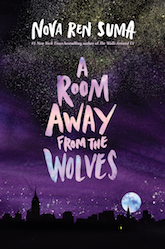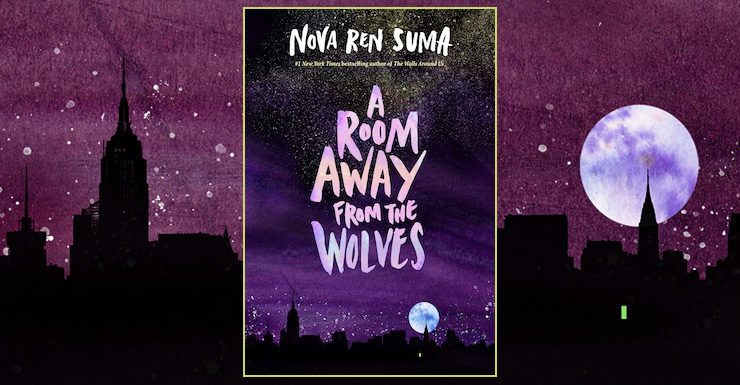Bina Tremper is out of options. Her stepsisters make her life a living hell, her stepfather has no interest in her, and her mother is sick of her constant lying. Eventually her mother kicks her out of the house; it’s only supposed to be temporary, she says, a month crashing with church friends, just long enough for hostilities to cool down. Bina has other ideas. Her mother once told her about the Catherine House, a group home in Manhattan where she sought refuge from Bina’s abusive biological father. After a violent incident at a high school party in the woods, Bina runs away to New York City.
But the Catherine House is not what it seems. Time stands still on the property. It feels at once ancient, contemporary, and outside the bounds of space and time. Although ostensibly the girls living there are all fairly recent arrivals, Bina gets the sense that some have been there too long, long enough to forget what life is like outside, long enough to become part of the fabric of the house. They are Catherine’s girls in more ways than one. Bina needs the Catherine House as much as the house needs her. The longer she stays in the house, the harder it becomes to leave, especially when her enigmatic and chaotic downstairs neighbor Monet Mathis begins to pull her deeper and deeper into darkness.
Nova Ren Suma uses the trappings of a standard haunted house—looming dread, a dead proprietor, creepy photos, unsettling locals, a house that is bigger on the inside than the outside indicates, ever-shifting configurations of rooms—but strips away the horror elements. Secrets are stacked around the house like bricks in a wall. Girls appear and disappear like ghosts. Old photographs seem to watch Bina, their sepia-toned eyes following her across the room. The founder of the home, Catherine de Barra, died in mysterious circumstances, and her tragedy infects all who reside in the old mansion. As a result, A Room Away from the Wolves is unnerving without being scary. You won’t be peering between your fingers and clutching your blanket while reading it, but you might notice your heart beating faster and your body tensing up.
Under the roof of the Catherine House, truth and lies, fact and fiction blur together. Is Bina dreaming? Hallucinating? Or are all these unsettling experiences really happening? Suma offers the reader no easy answers. The women who live in the Catherine House know more about Catherine’s secrets than they let on and intentionally keep Bina in the dark. Suma does the same to the reader by revealing Bina as a compulsive liar and kleptomaniac, rendering her an unreliable narrator. Can we trust Bina? Should we trust her more than the other Catherine girls? I’m not sure even Bina knows.
Suma’s obfuscating and often overly literary writing style is not for everyone, but it worked for me. This is not the kind of novel where the author lays the basic points of the plot out early on or where the reader has a feel for the arc and can feel the intensity building toward the climax. Suma turns up the heat so gradually I didn’t notice the water was boiling until it was too late. She drapes Bina’s confusion and unease over the reader by keeping us in the same disconcerting darkness.
It was dark, and I blamed the darkness. For those few moments, when she was midair and not even kicking, I practically became her. I grew her long legs and longer eyelashes, I lost the jumble of knots in my hair, I let the mistakes spill out of my suitcase and scatter without a care into the wind. I was falling, and falling fast. There was a hum in my ears like a song leaking through floorboards. The windows on the way down were all lit up, every one, people I didn’t know living their private lives inside as if no one could see. The skyline above sparkled the way stars used to at home, and I didn’t want to ever hit ground. I was someone here. I was someone.
Yet there are times when not knowing what’s happening becomes frustrating, particularly when Bina confronts something truly bizarre or inexplicable and she fails to question it. In many situations, the only reason she (and therefore the reader) doesn’t understand something is because she chooses not to try to understand it. Her questions pitched at the other girls go unanswered and instead of then hunting for the answers herself, she simply drops the question. Given the ending, I get why she was so incurious at the big things, but in the moment it makes it a challenge to connect to the story.
Buy the Book


A Room Away From The Wolves
I think the way Suma handled diversity could also use some work. Bina is Jewish, Monet has brown skin, and another girl is Southeast Asian. Bina also mentions in passing that she’s kissed boys and girls. I would’ve liked to see this taken further. Bina brushes it aside as quickly as she brings it up, which makes it feel like queerbaiting. Was she just experimenting or exploring her queerness? It might have been interesting to add a layer of attraction to her relationship with Monet, even if it was never acted on. Being queer and/or POC aren’t hats we can take on and off depending on our mood. Name-dropping identities feels too much like tokenizing for my taste. If you’re to list off diversity traits, you should at the very least do something with them.
Nova Ren Suma’s A Room Away from the Wolves is unlike much of the rest of contemporary young adult fantasy. It’s a beautiful read that alternates between haunting, exasperating, and entrancing. Opaque in plot, poetic in tone, and glacial in pace, this isn’t a novel for everyone, but I think everyone should read it.
A Room Away from the Wolves is available from Algonquin Young Readers.
Alex Brown is a YA librarian by day, local historian by night, pop culture critic/reviewer by passion, and an ace/aro Black woman all the time. Keep up with her every move on Twitter, check out her endless barrage of cute rat pics on Instagram, or follow along with her reading adventures on her blog.











“Bina also mentions in passing that she’s kissed boys and girls. I would’ve liked to see this taken further. Bina brushes it aside … which makes it feel like queerbaiting…. Being queer and/or POC aren’t hats we can take on and off depending on our mood.”
I don’t think you’re being fair. Many teens experiment. Kissing somebody of the same sex doesn’t make you queer, and dropping the subject as soon as you’ve brought it up merely suggests that it’s not something that’s of particular interest to the person at that time. No, you can’t just take off the queer hat; but you may take quite some time to realize that you are, or aren’t. All that a mention in passing tells the reader is that Bina is open to the idea. Which is a Good Thing. Not every story needs to check every minority box.
@1: But that’s exactly my point. If Suma intended it to be something Bina dabbled in as a straight girl, then that needed to be said. Without it, her dual gender kiss is jarring for me as a queer person. Suma needed to do something with that kiss, whether it be making it clear that it was a one-off (which is totally fine – teens experiment all the time) or that she’s queer (even if she’s still in the questioning phase). Namedropping queerness smacks of Katy Perry and often does more harm than good for baby or closeted queers.